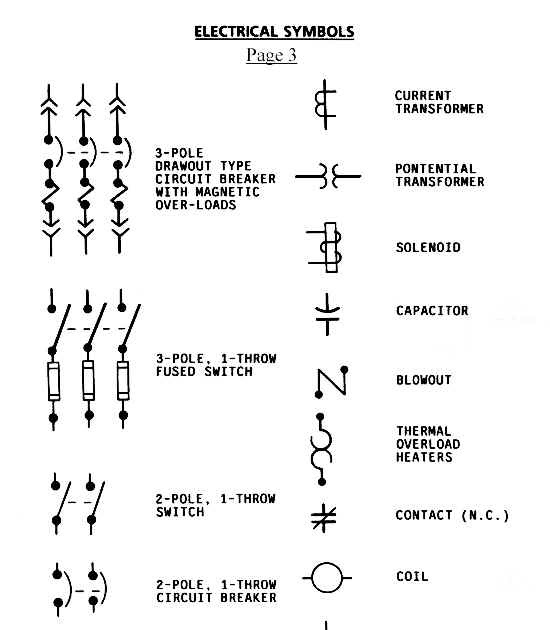
Ever feel like your electrical system is a ticking time bomb, ready to trip at the slightest provocation? Or maybe you're pushing the limits of your circuits, constantly flirting with overload. Enter the unsung hero of electrical stability: adjustable circuit breaker settings. These nifty controls can be the difference between a minor inconvenience and a full-blown power outage. Ready to unlock the secrets of these powerful little switches?
Traditional fixed circuit breakers are like stubborn gatekeepers, rigidly enforcing a single trip threshold. Adjustable circuit breakers, on the other hand, offer a more nuanced approach, allowing for customized protection tailored to the specific needs of a circuit. This flexibility can be a game-changer for everything from sensitive electronics to heavy-duty appliances.
The concept of adjustable circuit breakers emerged from the need for more precise control over electrical protection. Early breakers were crude and often unreliable, leading to frequent outages and even fires. As technology advanced, so did the sophistication of circuit breakers, culminating in the adjustable models we have today. These advancements offer a higher degree of customization, allowing users to fine-tune the protection level based on the characteristics of the connected load.
The core function of an adjustable circuit breaker is to protect against overloads and short circuits. An overload occurs when a circuit draws more current than it's designed to handle, while a short circuit is a dangerous surge of electricity caused by a fault in the wiring. Adjustable breakers allow users to modify the trip current, effectively setting the threshold at which the breaker will interrupt the flow of electricity. This customizable threshold is crucial for optimizing electrical system performance and preventing damage.
Imagine you have a high-powered motor that requires a momentary surge of current during startup. A standard breaker might interpret this surge as an overload and trip, shutting down the motor unnecessarily. With an adjustable breaker, you can increase the trip current just enough to accommodate the startup surge, ensuring smooth operation without compromising safety.
Adjustable circuit breaker features differ depending on the specific type and manufacturer, but common settings include magnetic trip adjustment for instantaneous short circuit protection, and thermal trip adjustment for sustained overload protection. Some advanced models also offer adjustable time delays, allowing for even finer control over the breaker’s response.
Three key benefits of configurable breaker settings include preventing nuisance tripping, optimizing equipment performance, and extending the lifespan of electrical devices. For instance, adjusting the time delay on a motor circuit prevents premature tripping during startup, while precise current settings can safeguard sensitive electronics from damage caused by power surges.
When implementing adjustable breakers, ensure compatibility with your electrical system, consult relevant electrical codes, and accurately calculate the load requirements for each circuit. A successful implementation requires careful planning and execution.
Advantages and Disadvantages of Adjustable Circuit Breaker Settings
| Advantages | Disadvantages |
|---|---|
| Prevents nuisance tripping | Requires specialized knowledge |
| Optimizes equipment performance | Potential for misconfiguration |
| Extends lifespan of devices | May void warranties if improperly adjusted |
Best practices include consulting with a qualified electrician, thoroughly testing the settings after adjustment, and documenting the changes made. Real-world examples of applications include protecting industrial machinery, optimizing data center power distribution, and ensuring the safe operation of medical equipment.
Challenges associated with adjustable breakers include the risk of incorrect settings, the need for specialized training, and potential compatibility issues with older electrical systems. However, these challenges can be mitigated through proper training, careful planning, and adherence to industry standards.
FAQs: What are adjustable circuit breakers? How do they work? Are they safe? What are the benefits? How do I adjust them? Where can I buy them? What are the common problems? How do I troubleshoot them?
Tips and tricks for working with adjustable breakers include always de-energizing the circuit before making adjustments, using calibrated tools, and double-checking the settings after completion.
In conclusion, adjustable circuit breaker settings offer a powerful tool for optimizing electrical system performance and safety. By understanding the benefits, best practices, and potential challenges, you can harness the full potential of these versatile devices. From preventing nuisance tripping to extending the life of your valuable equipment, adjustable circuit breakers play a crucial role in maintaining a reliable and efficient electrical system. Taking the time to learn about and implement these settings can significantly enhance the safety and performance of your electrical infrastructure. Don’t just react to electrical issues—take control with the power of adjustable circuit breaker settings.
The ultimate guide to launching your boat from a trailer
Dead battery not anymore the ultimate portable jump starter guide
Unlocking the power of wire harness connector kits













